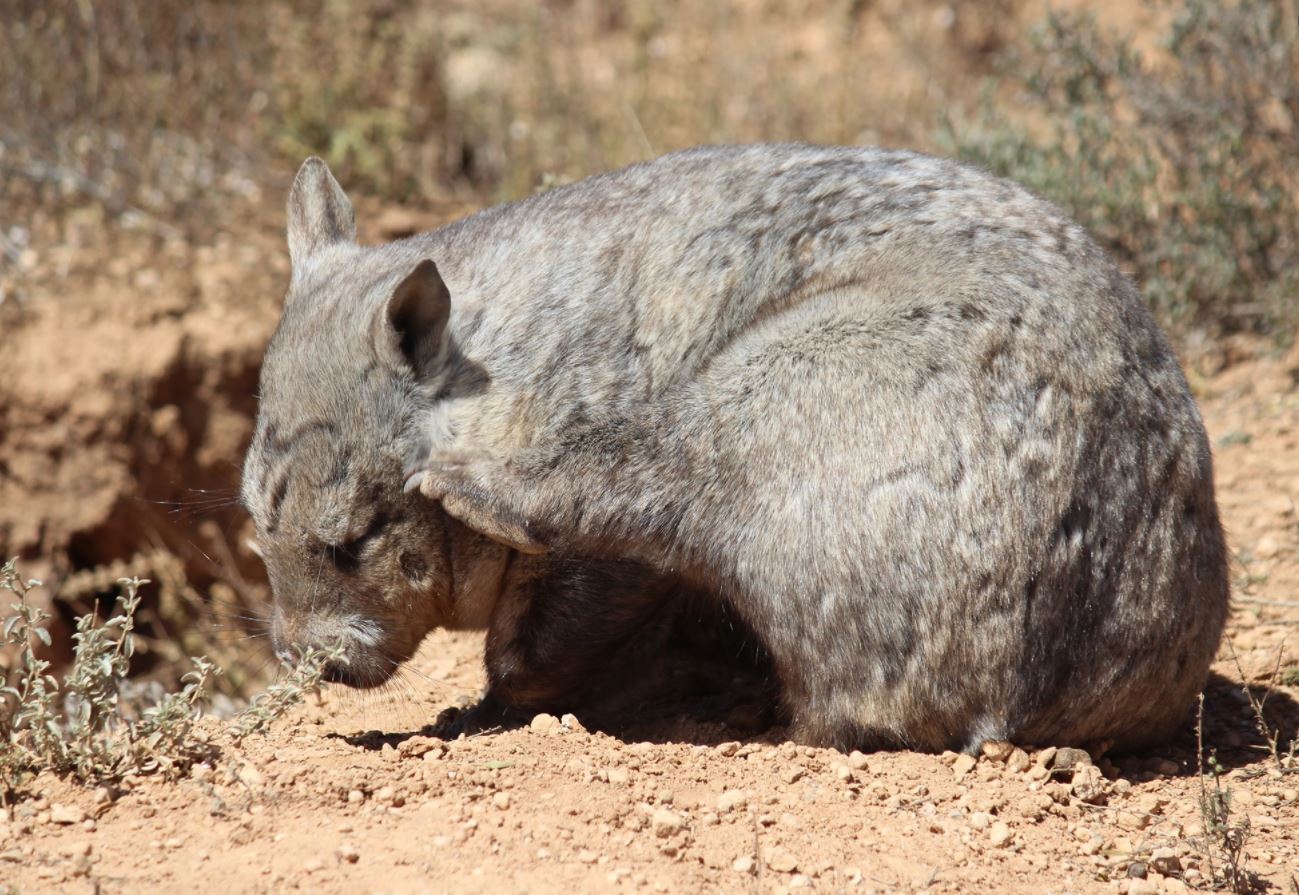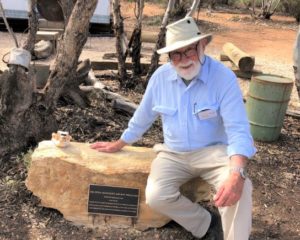
Southern hairy-nosed wombats at the Brookfield Conservation Park went into hiding on World Wombat Day (22 October 2021) during a special celebration to mark 50 years of Flinders University and other conservation and biodiversity research at the scientific camp site near Blanchetown at the gateway to the Riverland.
Speeches including a presentation by National Parks and Wildlife Service Executive Director Mr Mike Williams were organised for a plaque unveiling for the establishment of the research station at Brookfield. With hundreds of research permits issued since its foundation, the park has attracted students from overseas, interstate and also high schools over the years.

One of the founders of the scientific research camp, Flinders University Emeritus Professor of Palaeontology Rod Wells AM, says the park is not only important for the species’ survival – particularly as the landscape and vegetation changes with hotter, dryer conditions – but for ongoing postgraduate and other student field work experience.
The former pastoral station land, acquired in 1971 with support from the Chicago Zoological Society after a close research collaboration between Flinders University Professor Rod Wells and the late scientist Dr Peter Crowcroft (1922-1996), has been a haven for the amazing Australian mammals and a place of hands-on field observations and scientific work for decades to come. It continues to be a focus for research, teaching and nature-based tourism, as well as a reference site for Australia’s Land Ecosystem Observatory, TERN.
Along with wombats (lasiorhinus latifrons), the nature park is also home to species such as the fat-tailed dunnart, common dunnart, red and western grey kangaroos and emus. Abundant bird life includes the nationally vulnerable malleefowl (leipoa ocellata), Australian ringneck parrots, hooded robins and crested bellbirds along with the rarer stone curlew, ground cuckoo shrikes and Australian owlet nightjars.
The plaque celebrates the contribution of Professor Wells and Dr Crowcroft, as well as the 25th anniversary of the formation of the band of loyal Friends of Brookfield Conservation Park, with the volunteers’ role integral to the park’s success. Volunteers continue to closely support Department for Environment and Water management of the park.
The 5534 hectare park comprises a major area of mallee vegetation within the South Australian Murray Darling Basin. Two-thirds of the park is closed to the general public to enable long and short-term scientific research.
 Australian-American mammalogist and ecologist Dr Crowcroft was director of the SA Museum in the 1960s and studied wombat behaviour near Blanchetown before moving to the US to become a director of Brookfield Zoo and President of the Chicago Zoological Society where he worked with colleagues back in SA to set up the Brookfield Wombat Reserve to study wombats and associated fauna and flora. A close collaboration between Flinders University and Cornell University also led to US PhDs coming to Brookfield for research studies.
Australian-American mammalogist and ecologist Dr Crowcroft was director of the SA Museum in the 1960s and studied wombat behaviour near Blanchetown before moving to the US to become a director of Brookfield Zoo and President of the Chicago Zoological Society where he worked with colleagues back in SA to set up the Brookfield Wombat Reserve to study wombats and associated fauna and flora. A close collaboration between Flinders University and Cornell University also led to US PhDs coming to Brookfield for research studies.
See ‘Variation in the sex ratio of pouch young and adult hairy-nosed wombats (Lasiorhinus latifrons and Lasiorhinus krefftii) 2020 by Matt Gaughwin, Alan Horsup, Chrisopher Dickman, Rod Wells, Faith Walker and David Taggart in Behavioral Ecology and Sociobiology Vol 74, 90
Professor Wells also has a book chapter on Vombatidae (Wombats) pp 418-434 in the reference Handbook of the Mammals of the World Vol 5, Monotremes and Marsupials (Lynx Edicions, Barcelona) eds D Wilson and RA Mittermeier.

